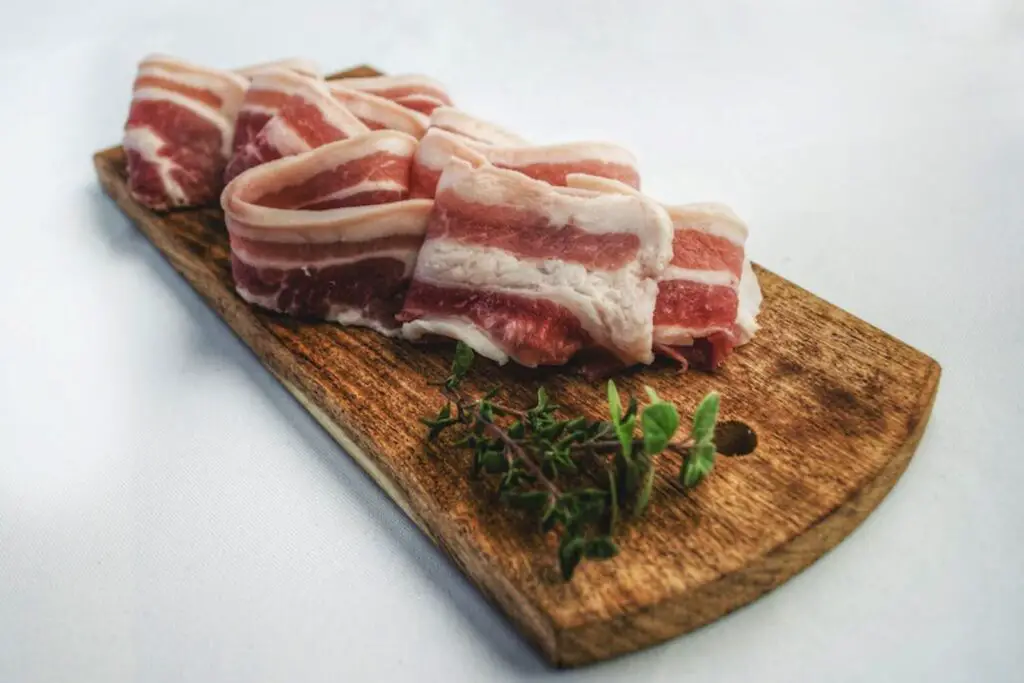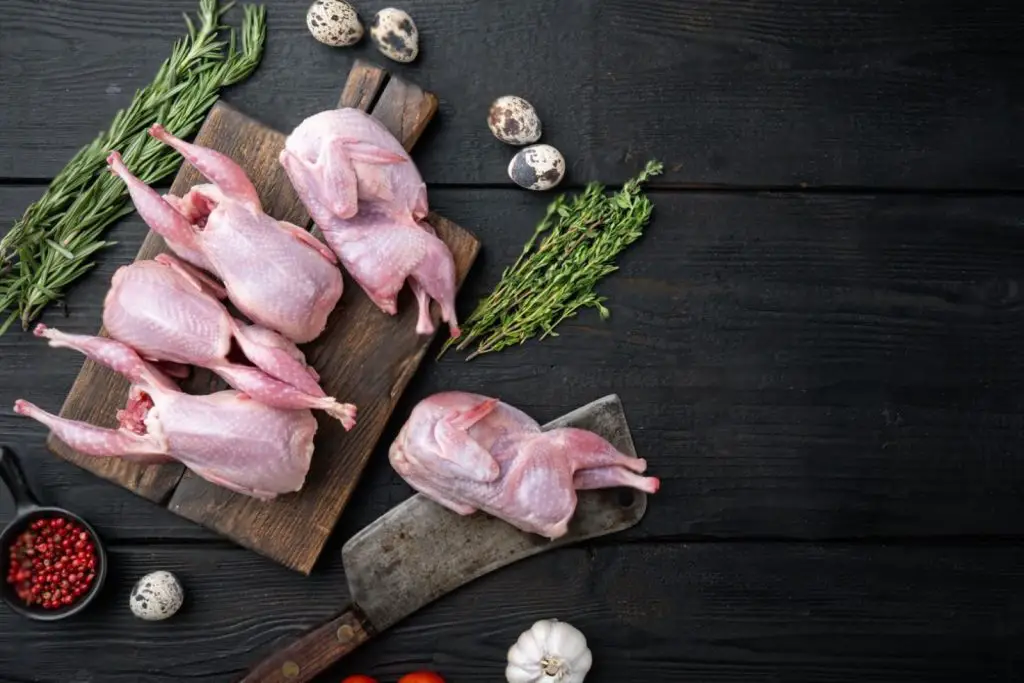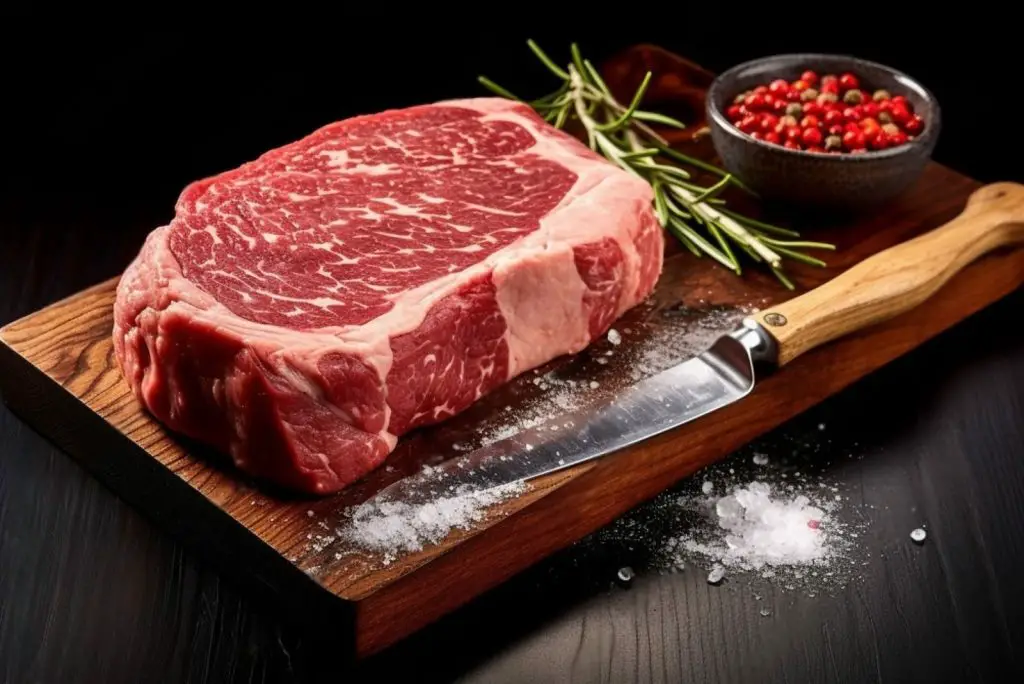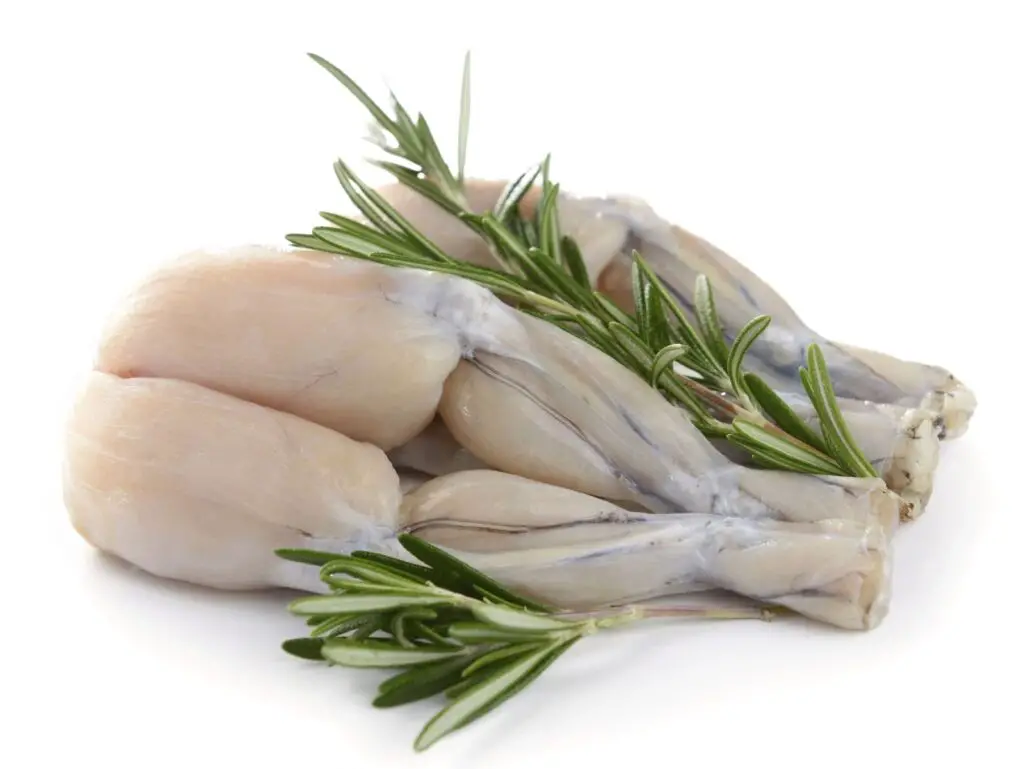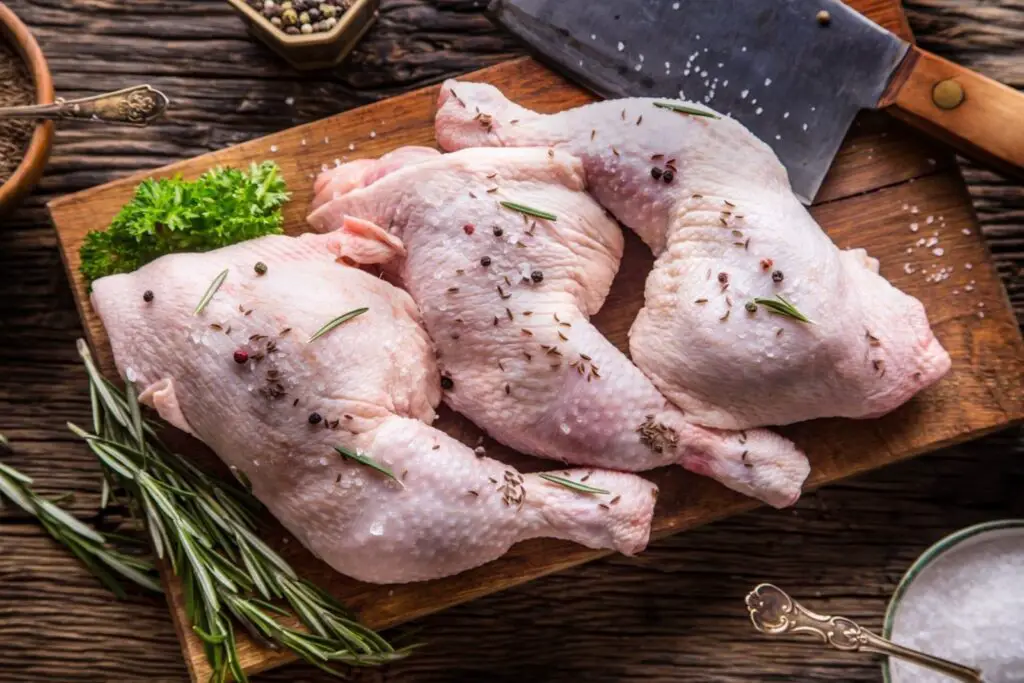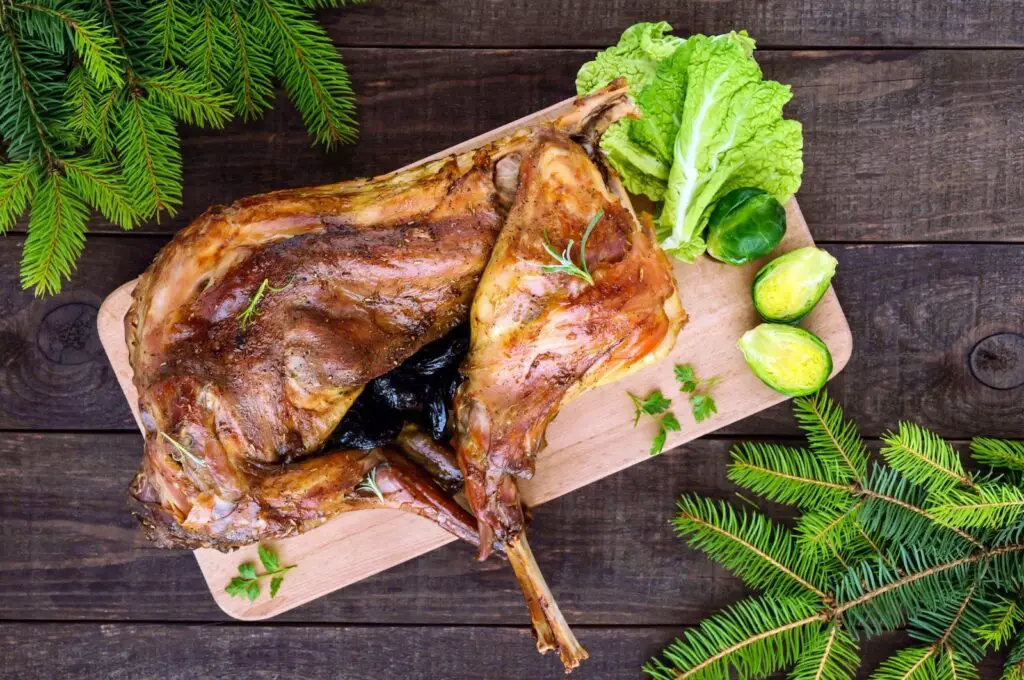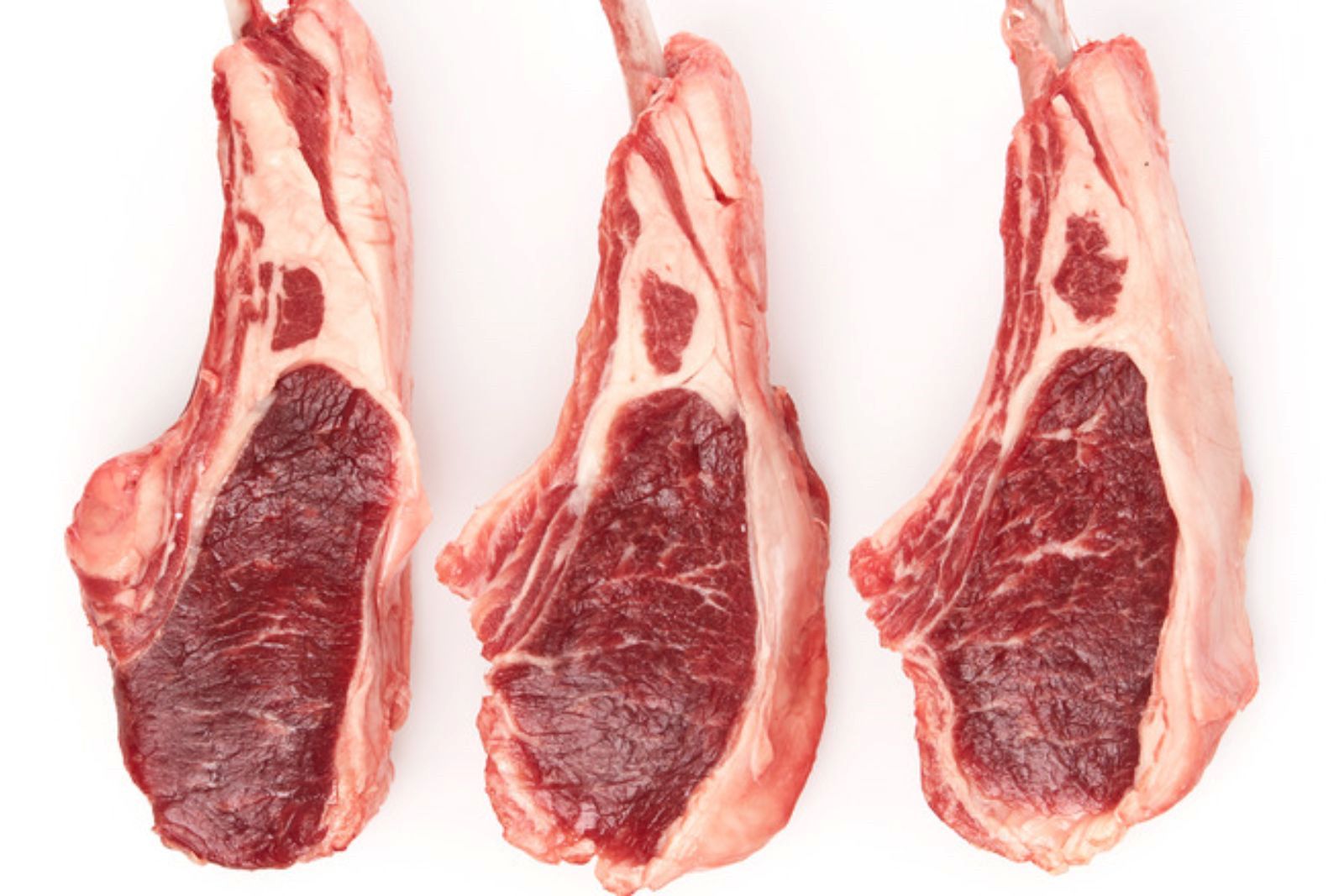
Lamb, a succulent and flavorful meat cherished in various culinary traditions, has been a staple in many cuisines worldwide. Whether enjoyed in classic dishes like roast lamb, hearty stews, or as tender cuts on the grill, its rich taste and versatility make it a favorite among meat lovers. However, if you find yourself with surplus lamb or wish to stock up on this delectable protein, freezing is an excellent method to preserve its freshness and ensure that it remains available for future gastronomic adventures. By properly freezing lamb cuts or portions, you can extend its shelf life while retaining its tender texture and delectable taste, providing you with a convenient source of inspiration for countless culinary creations. In this guide, we will explore the best practices for freezing lamb, including pre-freezing preparation, storage techniques, and thawing instructions, empowering you to enjoy the goodness of lamb at your convenience and elevate your dining experiences to new heights. Join us as we uncover the secrets to freezing lamb and embark on a journey of culinary exploration with this beloved meat.
Here are the simple steps to freeze lamb:
Step 1: Choose Fresh and High-Quality Lamb
The first step in freezing lamb is to select fresh and high-quality meat. This is a crucial consideration because the quality of the lamb before freezing will significantly impact its taste and texture when it’s eventually cooked and consumed. Starting with fresh lamb ensures that you freeze it at its best state, preserving its natural flavors and tenderness.
When purchasing lamb, look for cuts that are in their prime. Prime cuts are those that come from young and well-fed animals, typically less than one year old. These cuts are known for their tenderness and excellent flavor, making them the ideal choice for freezing. If possible, choose lamb that has been recently butchered and has not been sitting in the display case for too long.
Freshly purchased lamb is preferable for freezing because it has not undergone any temperature abuse or extended storage, which can affect its quality. Meat that has been left at improper temperatures or exposed to air for extended periods can develop off-flavors and spoilage, leading to a less enjoyable eating experience.
By starting with fresh and high-quality lamb, you ensure that the freezing process serves as a means of preservation, locking in the lamb’s natural taste and texture rather than trying to salvage meat that has already begun to degrade. Properly frozen fresh lamb can maintain its quality for an extended period, allowing you to enjoy the delicious taste of lamb even when it’s not readily available in the market or during its off-season.
The first step in freezing lamb is to be selective and choose fresh, high-quality cuts. Doing so will guarantee the best possible results when you eventually cook and serve the lamb, ensuring a flavorful and enjoyable dining experience.
Step 2: Clean and Trim the Lamb
Cleaning and trimming the lamb before freezing is an essential step to ensure the meat remains in optimal condition during storage. Properly cleaning the lamb removes any surface impurities, while trimming helps maintain its quality and prevents potential issues like freezer burn.
- Removing surface impurities: Before freezing, it’s crucial to rinse the lamb under cold water to remove any dirt, blood, or other contaminants that might be present on the surface. This step helps eliminate bacteria and foreign particles that could affect the meat’s taste and safety during storage.
- Trimming excess fat: Lamb can have visible fat on the surface or between the muscle fibers. While fat adds flavor, excessive fat can become rancid during freezing and negatively impact the meat’s taste. Trimming off excess fat before freezing not only improves the lamb’s storage quality but also makes it easier to handle during the cooking process later on.
- Removing unwanted parts: Trimming also involves removing any unwanted parts, such as tough connective tissues or any portions that might not be suitable for freezing or cooking. By doing so, you ensure that only the best and most usable portions of the lamb are preserved, resulting in a more enjoyable dining experience when you eventually cook the meat.
- Patting dry: After cleaning and trimming the lamb, it’s essential to pat the meat dry with paper towels or a clean cloth. Excess moisture on the surface can lead to ice crystal formation during freezing, which may cause freezer burn and negatively impact the lamb’s texture and flavor.
By cleaning and trimming the lamb before freezing, you create a clean slate for the preservation process. This step not only ensures the meat stays safe to eat but also helps maintain its quality and taste over an extended period in the freezer. Properly cleaned and trimmed lamb will be ready to use in various culinary dishes, allowing you to enjoy its delicious flavor and tenderness when you decide to cook it after freezing.
Step 3: Package the Lamb for Freezing
Properly packaging the lamb before freezing is crucial to maintaining its quality and protecting it from freezer-related issues, such as freezer burn and loss of moisture. There are different packaging options depending on the size of the lamb cuts and personal preferences, all designed to keep the lamb fresh and flavorful during its time in the freezer.
- Wrapping in plastic wrap or aluminum foil (for individual cuts): For individual lamb cuts, like chops or steaks, consider wrapping them tightly in plastic wrap or aluminum foil. This wrapping creates a barrier that helps prevent air and moisture from coming into contact with the lamb’s surface. Air exposure can lead to freezer burn, which causes the meat to become dehydrated and negatively affects its taste and texture. The plastic wrap or aluminum foil also keeps the lamb’s natural juices sealed in, preserving its moisture and tenderness.
- Using airtight containers (for larger portions): When dealing with larger portions of lamb, such as roasts or whole legs, it’s best to use airtight containers. These containers provide a secure seal that minimizes air exposure, reducing the risk of freezer burn. Airtight containers also help maintain the lamb’s natural juices, ensuring the meat remains succulent and flavorful when it’s eventually thawed and cooked.
- Utilizing freezer bags (for both individual cuts and larger portions): Freezer bags are another excellent option for packaging lamb. For individual cuts, place each piece in a separate freezer bag and remove as much air as possible before sealing. For larger portions, choose appropriately sized freezer bags. The thick, durable material of these bags helps protect the lamb from freezer burn and allows for efficient storage in the freezer.
By selecting the appropriate packaging method, you create a barrier that shields the lamb from harmful elements while preserving its taste, texture, and moisture. Properly packaged lamb will be better equipped to retain its quality throughout its time in the freezer, ultimately leading to delicious and enjoyable meals once it’s cooked.
Step 4: Label and Date the Packages
Labeling and dating the packages of frozen lamb is a crucial step in the freezing process that helps you stay organized and maintain the quality of the meat. By providing essential information on each package, you avoid confusion and ensure that you use the lamb in a timely manner, prioritizing older packages before newer ones.
- Contents identification: Clearly label each package with the contents, which in this case is lamb. This simple step allows you to distinguish the lamb from other items in your freezer, making it easy to locate and access when you need it. Having clear labels also helps prevent mix-ups with other frozen foods and ensures you know precisely what’s inside each package.
- Date of freezing: Along with identifying the contents, include the date when the lamb was frozen on the label. This is vital information as it allows you to track how long the lamb has been in the freezer. Over time, frozen meat can degrade in quality, so knowing the freezing date helps you prioritize the use of older packages before their quality starts to decline. As a general guideline, lamb is best consumed within 6-9 months of freezing for optimal taste and texture.
- Rotation and inventory management: Proper labeling and dating facilitate a “first in, first out” approach to using your frozen lamb. By using the oldest packages first, you avoid having lamb sitting in the freezer for too long, reducing the risk of freezer burn or loss of quality. This practice also minimizes waste and ensures that none of the lamb goes past its prime.
- Recipe planning: Having labeled and dated packages allows you to plan your meals effectively. When you know what lamb cuts you have and their freezing dates, you can plan recipes based on the available inventory and select the most appropriate cuts for specific dishes.
- Safety and food quality: Proper labeling ensures that you can adhere to food safety guidelines. It helps you avoid any uncertainty about how long the lamb has been in the freezer, ensuring you consume it within safe timeframes for the best quality and taste.
In labeling and dating the packages of frozen lamb is a crucial step in the freezing process. It empowers you to keep track of your inventory, prioritize usage, and plan your meals effectively. By maintaining proper records of the frozen lamb, you enhance food safety, reduce waste, and ensure that you enjoy delicious and flavorful lamb every time you cook it.
Step 5: Pre-Freeze for Better Organization
Pre-freezing, also known as flash-freezing, is a beneficial technique to adopt when you have multiple cuts or portions of lamb to freeze. It involves laying out the individual pieces on a baking sheet or tray and freezing them before transferring them into their final storage containers or bags. This step serves two main purposes: preventing the pieces from sticking together and allowing for better organization and portioning when using the frozen lamb later on.
- Prevents sticking together: When cuts of lamb are placed directly into a storage container or bag without pre-freezing, they can easily stick together as they freeze. This can be inconvenient and frustrating when you want to use only a specific amount of lamb but find the pieces frozen together in a solid block. Pre-freezing the cuts on a baking sheet or tray with enough space between them ensures they freeze individually before being packed together for long-term storage.
- Easy portioning: Pre-freezing the lamb pieces separately enables you to remove only the required amount when cooking. Instead of thawing an entire package or having to separate frozen pieces, you can easily pick out the desired number of lamb cuts for your recipe. This not only saves time but also reduces unnecessary thawing and refreezing, which can affect the meat’s quality.
Steps to pre-freeze lamb for better organization:
- Line a baking sheet or tray with parchment paper or aluminum foil to prevent sticking.
- Arrange the individual lamb cuts on the baking sheet, ensuring they are not touching each other.
- Place the baking sheet in the freezer and allow the lamb to pre-freeze for about 1 to 2 hours, or until the pieces are firm to the touch.
- Once the lamb is pre-frozen, transfer the individual pieces into airtight containers or freezer bags for long-term storage. Be sure to label and date each package for easy identification.
By pre-freezing the lamb before final storage, you optimize organization and portion control. This method allows you to enjoy the convenience of using only the desired amount of lamb without the frustration of dealing with frozen pieces that have clumped together. Proper pre-freezing also helps maintain the overall quality of the frozen lamb and ensures that you can enjoy its delicious taste and texture whenever you decide to cook it.
Step 6: Store the Lamb in the Freezer
After pre-freezing the lamb, it’s time to transfer the individual pieces into the main freezer compartment for long-term storage. Properly storing the lamb in the freezer is essential to maintain its quality, taste, and safety until you’re ready to use it in your favorite dishes. Following the correct storage guidelines ensures that the frozen lamb remains in optimal condition for an extended period.
- Transfer the pre-frozen lamb: Carefully move the pre-frozen lamb pieces from the baking sheet or tray to their final storage containers or freezer bags. Make sure to handle the lamb with clean hands or utensils to avoid contamination.
- Airtight storage: Place the lamb in airtight containers or freezer bags to protect it from air exposure. Ensuring a proper seal helps prevent freezer burn and preserves the lamb’s natural flavors and moisture.
- Temperature control: Verify that your freezer is set to the appropriate temperature for storing meat, typically at or below 0°F (-18°C). Keeping the freezer at this temperature ensures that the lamb remains safe from bacterial growth and helps retain its quality during extended storage.
- Organization: Arrange the lamb packages neatly in the freezer to optimize space and make it easier to locate specific cuts when needed. Group similar cuts together or organize them by freezing date for a more efficient rotation system.
- Avoid frequent temperature fluctuations: Keep the freezer closed as much as possible to maintain a consistent temperature. Frequent opening and closing can cause temperature fluctuations, leading to potential quality issues with the frozen lamb.
- Avoid overcrowding: While it’s essential to make efficient use of freezer space, avoid overcrowding the freezer with too much food. Adequate airflow is necessary for proper freezing and maintaining a constant temperature.
By storing the pre-frozen lamb in the main freezer compartment at the correct temperature, you ensure the meat’s longevity and quality. The freezing process halts bacterial growth and enzymatic reactions, preserving the lamb’s taste and texture for an extended period. This way, you can enjoy the delicious flavor of lamb throughout the time it’s stored in the freezer, allowing for greater flexibility in meal planning and cooking. Properly stored frozen lamb is a convenient and versatile option, providing you with delicious ingredients whenever you need them.
How long can lamb last in the freezer?
Lamb can last in the freezer for approximately 6 to 9 months. Properly stored at or below 0°F (-18°C), frozen lamb maintains its quality, taste, and safety during this period. It is recommended to label and date the packages to ensure proper rotation and usage of the oldest cuts first.
Step 7: Thaw the Frozen Lamb
Thawing frozen lamb safely is a crucial step in preparing it for cooking. Proper thawing helps maintain the lamb’s quality, taste, and safety while minimizing the risk of bacterial growth. The best and recommended method for thawing frozen lamb is to do so gradually in the refrigerator. This method ensures even and controlled thawing, preserving the meat’s texture and flavor.
- Refrigerator thawing: Place the frozen lamb in a shallow container or on a plate to catch any potential drips as it thaws. Then, put the container in the refrigerator. Thawing lamb in the refrigerator is a slow process but the safest, as it keeps the meat at a consistent, cold temperature. It allows the lamb to thaw evenly from the outside to the center, reducing the risk of bacteria growth.
- Plan ahead: Thawing lamb in the refrigerator requires some planning. Larger cuts of lamb may take a day or more to thaw completely, so it’s essential to plan your meals in advance and allow enough time for the thawing process. For convenience, you can transfer the lamb from the freezer to the refrigerator the night before you plan to cook it.
- Avoid room temperature thawing: Never thaw lamb at room temperature or in warm water. These methods can lead to uneven thawing and promote bacterial growth on the surface of the meat. Bacteria multiply rapidly at room temperature, increasing the risk of foodborne illnesses. Thawing lamb at room temperature is not safe and should be avoided.
- Safe handling: During the thawing process, it’s crucial to handle the lamb properly to prevent cross-contamination. Place the lamb on the bottom shelf of the refrigerator to avoid any drips from contaminating other foods. Clean any surfaces or utensils that come into contact with the lamb to prevent the spread of bacteria.
- Cook immediately after thawing: Once the lamb has thawed completely, it’s essential to cook it promptly. Do not refreeze the lamb after it has been thawed, as this can lead to a loss of quality and safety.
By following the recommended method of refrigerator thawing, you ensure that the lamb thaws safely, maintains its quality, and remains safe to eat. Gradual thawing helps the lamb retain its natural juices and texture, resulting in delicious and succulent meat when it’s cooked. Thawing lamb properly is a vital step in the overall process, contributing to a successful and enjoyable dining experience when you prepare and savor the delicious flavors of the lamb in your favorite recipes.
Other related questions
Can you refreeze lamb?
Refreezing lamb is generally not recommended. Once lamb has been thawed, it should be cooked and consumed promptly. Refreezing can lead to a loss of quality, texture, and taste, and it may also increase the risk of bacterial growth and foodborne illnesses. To ensure food safety and maintain the best quality, it’s advisable to avoid refreezing lamb once it has been thawed.
How do I know if the lamb has gone bad after being frozen?
To determine if frozen lamb has gone bad, look for signs such as a sour or unpleasant odor, unusual texture changes like excessive slime or discoloration, and the presence of ice crystals or freezer burn. If the lamb exhibits any of these signs, it may indicate spoilage and should not be consumed. When in doubt, trust your senses and discard any frozen lamb that appears or smells suspicious, as consuming spoiled meat can pose health risks.
Can I freeze lamb for making broth or stock later?
Yes, you can freeze lamb bones or trimmings for making broth or stock later. After roasting or cooking the lamb, remove any meat from the bones and save them, along with any trimmings or leftover pieces. Place the bones and trimmings in airtight freezer containers or bags, label them with the date, and freeze. Thaw the frozen lamb bones and trimmings in the refrigerator when ready to use, then simmer them with vegetables and herbs to create a flavorful lamb broth or stock for various recipes.
Can I freeze lamb for making kebabs or skewers?
Yes, you can freeze lamb for making kebabs or skewers. Cut the lamb into cubes or strips, marinate them if desired, and then thread them onto skewers. Place the skewers in airtight freezer containers or bags, label them with the date, and freeze for future use. Thaw the frozen lamb skewers in the refrigerator before grilling or cooking them for delicious and flavorful kebabs.
Can I freeze lamb for making shepherd’s pie or moussaka?
Yes, you can freeze lamb for making shepherd’s pie or moussaka. Cook the lamb with the necessary seasonings and ingredients for the respective dish. Allow it to cool, then portion it into airtight freezer containers or bags, label them with the date, and freeze for later use. Thaw the frozen lamb in the refrigerator before assembling the shepherd’s pie or moussaka for a convenient and delicious meal.
Can I freeze lamb for making curry or stew?
Yes, you can freeze lamb for making curry or stew. Cook the lamb with the desired curry or stew ingredients, allow it to cool, and portion it into airtight freezer containers or bags. Label them with the date and freeze for future use. Thaw the frozen lamb in the refrigerator before reheating and simmering it with the curry or stew base for a hearty and flavorful meal.

